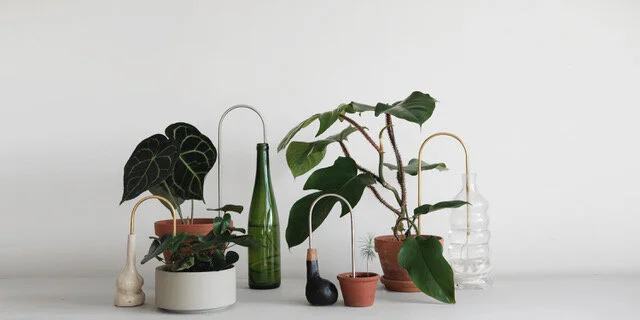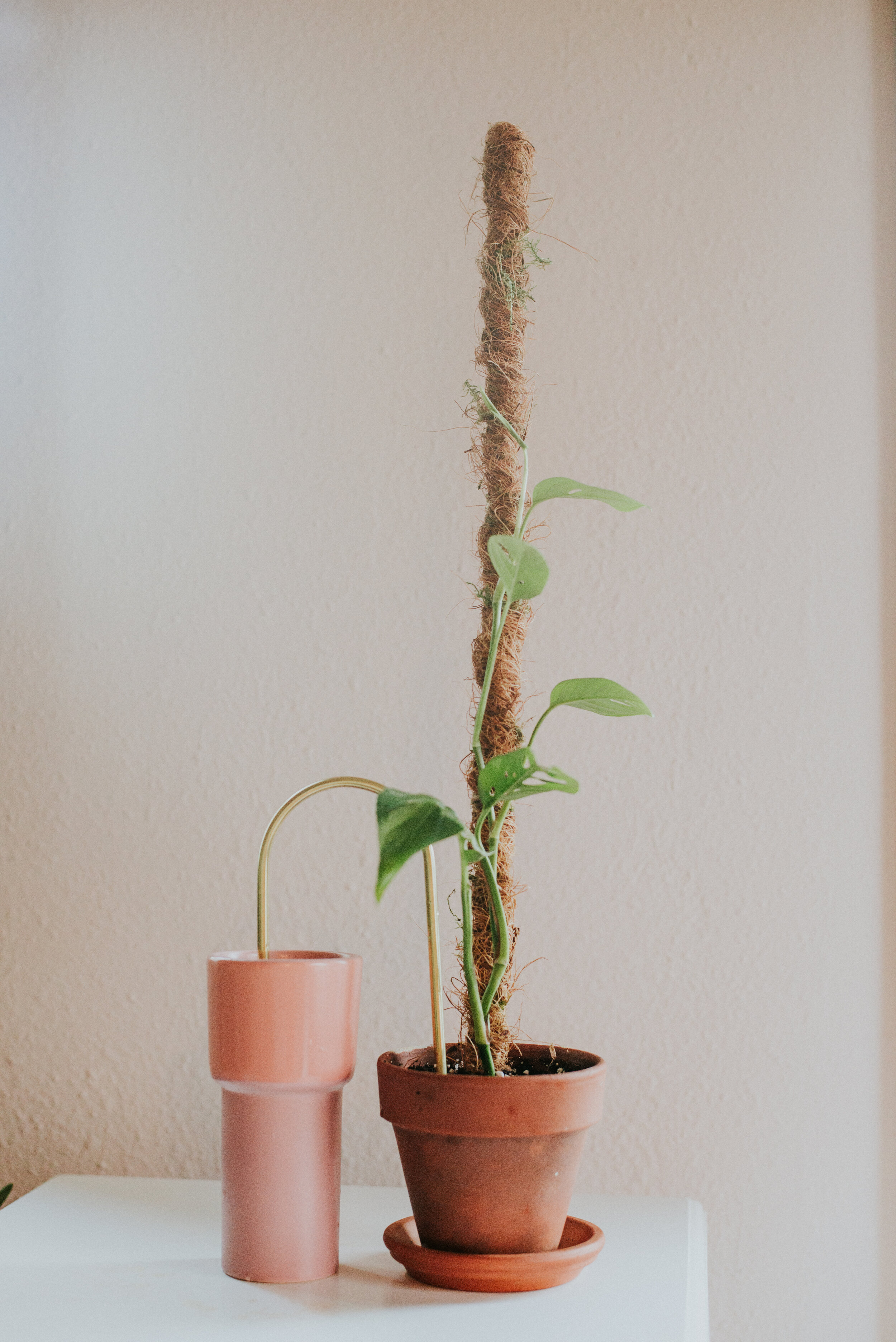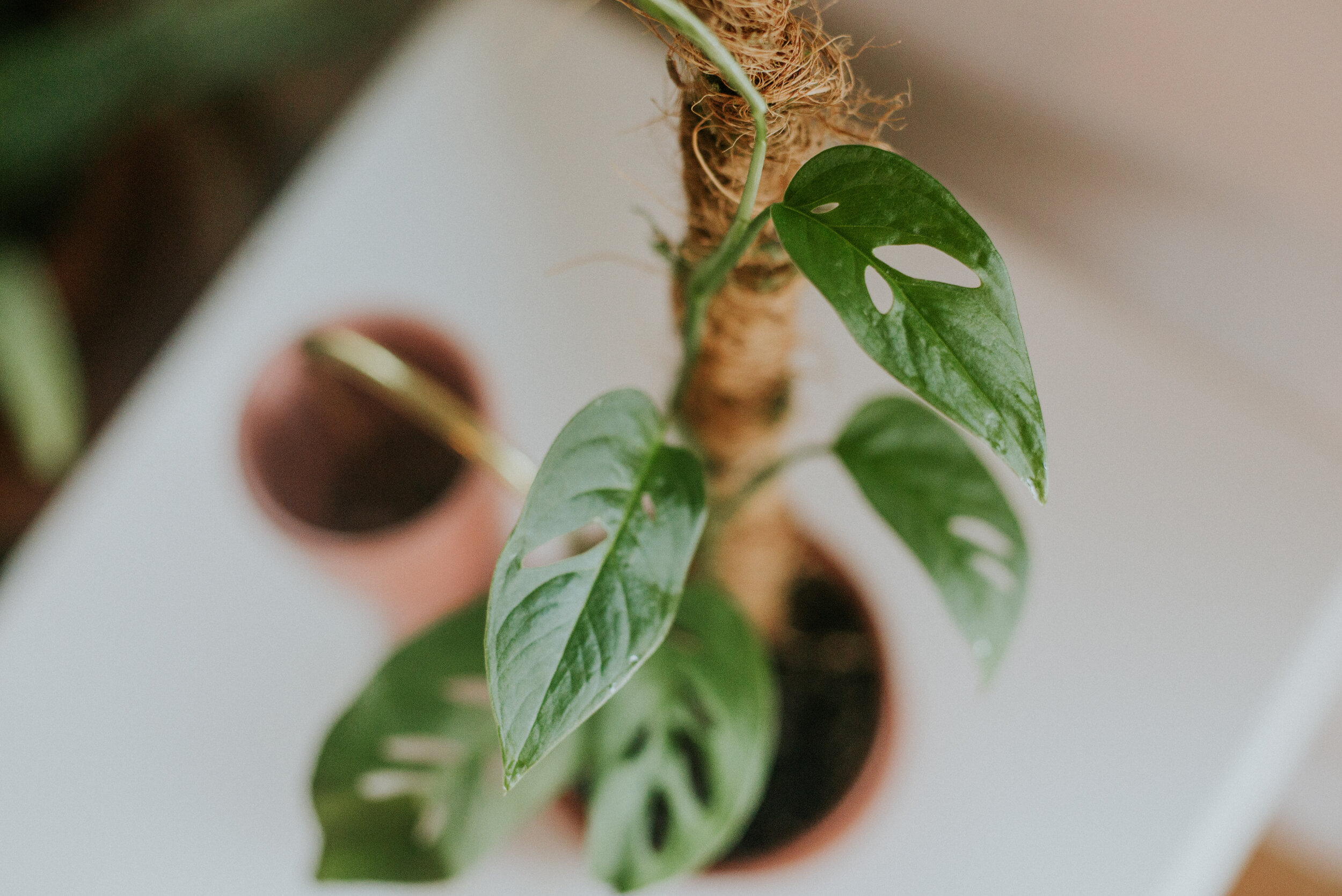SELF-WATERING PLANTS
& FLOWER GARDENS
🌿SHOW NOTES🌿
In this Episode of Among the Jungle Podcast we travel overseas to Stockholm Sweden with architectural engineer and plant lover, Elin Fyhr, on her journey to create "Plant Straws". Whether you are prone to wanderlust and worry about your plants while you are away, or just happen to have some prissy plant babes around the house that like an extra drink- Plant Straws are a wonderful and chic way to reduce your plant maintenance and allow your plants to literally drink at their own pace. Learn more about how they work, here.
We share an inspired dream as well that we would love for you to become a part of-
but you have to listen to find out more!
Today we will learn:
1) All about plants straws and how they make life easier
2) Experiencing plants through our sense of smell
3) A note on minimalism
4) Inspired ideas on how to share your love of plants with your community
GET ON-GOING PLANT HELP!
Join our online houseplant & garden club that is dedicated to helping you navigate plant care with ease.
GREENHOUSE HANGOUT
🌿OUR GUEST
🌿
ELIN FYHR
“DREAM BIG, and start a flower garden.”
GALLERY
RESOURCES
🌿LOCATION REFERENCES:
🌿References:
Lausanne jardins (Event at Botanical Garden)
Musée et jardins botaniques cantonaux or The Cantonal Botanical Museum and Gardens
Water Wick & Water Globes
Friend Maria’s Ceramics: @thehiddenadventure
Mid-Summer Celebration in Sweden: is one of the most important days of the year, rivaling Christmas with its festive spirit and traditions. Traditionally, Midsummer was celebrated on June 24, the feast day of St. John the Baptist, but the holiday has its roots in a pre-Christian solstice festival.
Minimalism: a style or technique (as in music, literature, or design) that is characterized by extreme spareness and simplicity.
Thrifting: refers to the act of shopping at a thrift store, flea market, garage sale, or a shop of a charitable organization, usually with the intent of finding interesting items at a low price. Also a method of “reusing” materials and reducing your consumption of products and carbon footprint.
🌿BOTANICAL JARGON:
Pest- is any animal or plant detrimental to humans or human concerns, including crops, livestock and forestry, among others. The term is also used of organisms that cause a nuisance, such as in the home.
Spider Mites- are common pests of many outdoor crops including berries, ornamentals, vines, many fruit trees, houseplants and cannabis. Spider mites are members of the Acari family Tetranychidae, which includes about 1,200 species. They generally live on the undersides of leaves of plants, where they may spin protective silk webs, and they can cause damage by puncturing the plant cells to feed.
Scale- a small bug with a protective shield-like scale. It spends most of its life attached by its mouth to a single plant, sometimes occurring in such large numbers that it becomes a serious pest.
Dormancy- is the state of having normal physical functions suspended or slowed down for a period of time; deep sleep. The state in which a plant is alive but not actively growing.
Madeleine- (used here in relation to smell) something that evokes a memory.
Ornamentals- are plants that are grown for decorative purposes in gardens and landscape design projects, as houseplants, cut flowers and specimen display. The cultivation of ornamental plants is called floriculture, which forms a major branch of horticulture.
Tropical Plant- is a plant that grows naturally in a tropical climate. A tropical climate is typically hot and humid, with temperatures constantly exceeding 18 degrees Celsius, with zero frost days.
Pollinators- A pollinator is an animal that moves pollen from the male anther of a flower to the female stigma of a flower. This helps to bring about fertilization of the ovules in the flower by the male gametes from the pollen grains.
Guttation- is the exudation of drops of xylem sap on the tips or edges of leaves of some vascular plants, such as grasses, and a number of fungi. Guttation is not to be confused with dew, which condenses from the atmosphere onto the plant surface.
Community Garden- is any piece of land gardened by a group of people, utilizing either individual or shared plots on private or public land. The land may produce fruit, vegetables, and/or ornamentals.
Seedlings- is a young plant sporophyte developing out of a plant embryo from a seed. Seedling development starts with germination of the seed. A typical young seedling consists of three main parts: the radicle (embryonic root), the hypocotyl (embryonic shoot), and the cotyledons (seed leaves).
Direct Sow- means that you start planting seeds in the garden, rather than buying small plants or starting seeds indoors earlier and transplanting them outside. Many seeds of both flowers and vegetables can be started outdoors, at the start of the growing season.
Propagation- is the breeding of specimens of a plant or animal by natural processes from the parent stock.
Osmosis- a process by which molecules of a solvent tend to pass through a semipermeable membrane from a less concentrated solution into a more concentrated one, thus equalizing the concentrations on each side of the membrane. OR the process of gradual or unconscious assimilation of ideas, knowledge, etc.
Patina- is a thin layer that variously forms on the surface of copper, brass, bronze and similar metals, or certain stones, and wooden furniture, or any similar acquired change of a surface through age and exposure.
Wabi Sabi- Japanese term for the beauty of natural patina and aging.
Yūgen- Japanese term for profound grace and subtlety
Water Soluble Fertilizer- provides the extra boost of nutrients your plants and lawn need to thrive. The fertilizer can be dissolved in the same water used to irrigate plants, making it easy to fertilize and hydrate your plants at the same time.
Slow Release Fertilizer- fertilizer coated with plastic resin or sulfur based polymers which slowly break down from water, heat, sunlight and/or soil microbes. Quick releasing fertilizers can be over applied or improperly diluted, which can result in the burning of plants.
Organic Fertilizer- are fertilizers derived from animal matter, animal excreta (manure), human excreta, and vegetable matter (e.g. compost and crop residues). Naturally occurring organic fertilizers include animal wastes from meat processing, peat, manure, slurry, and guano.
🌿PLANTS MENTIONED:
Monstera adansonii (add photo)
Hoya sp.
Mahalo for listening and I hope this episode “INSPIRED YOUR WILD”!
Looking forward to where the journey takes us next!

















